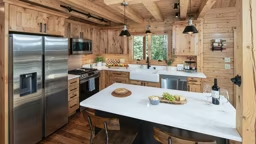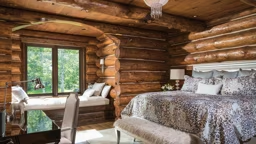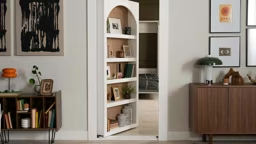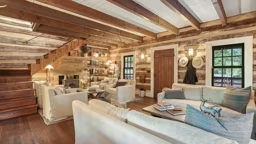Story by Stacy Durr Albert
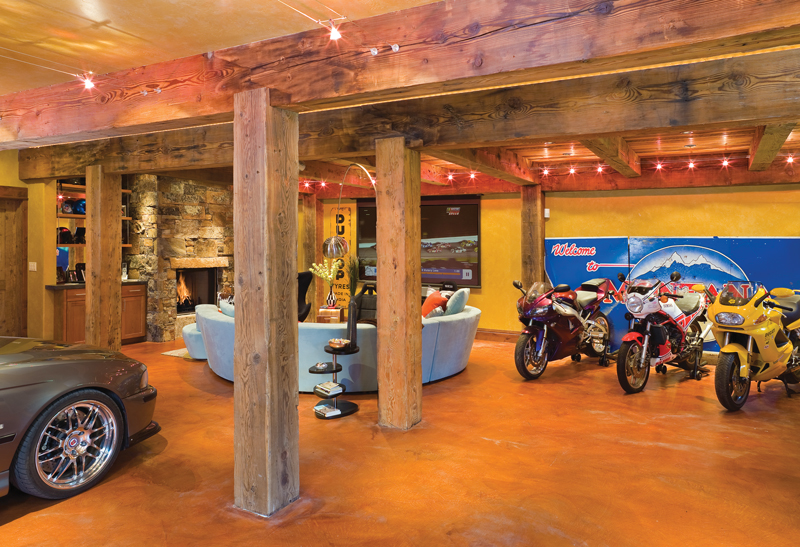
The idea that opposites attract may certainly ring true in the realm of relationships, but when it comes to home design, incompatibly could be a recipe for disaster.
“People often go into a home project with two very different ideas,” explains Jay Parmeter, president of Golden Eagle Log Homes in Wisconsin Rapids, Wisconsin. “And, in a log home, every single wall and ceiling has to be talked about, so there is a great deal of thinking, discussion and compromise that needs to take place.”
The good news is that with the right attitude and sufficient planning, you can indeed achieve floor plan harmony (no matter how different your tastes may be), creating a home that all parties will love. Here’s how to get started.
Can’t We All Just Get Along?
Whether you’re building a house with your soul mate, a family member or a friend, disagreements are bound to pop up; after all, no two people, nor their needs, are exactly alike.
“Each person may love log homes, but for different reasons,” explains Karen Youngstrom of Yellowstone Log Homes in Rigby, Idaho. “One may view it as a perfect getaway for fishing and outdoor sports, while the other loves it for its coziness — a place to get all the family together.” Another issue that may fuel the fire is the dynamics of modern relationships. “Modern couples oftentimes lead very independent lives,” shares Allen Halcomb of MossCreek Designs. “Designing a house requires a higher level of agreement and interaction than may be the norm for them.”
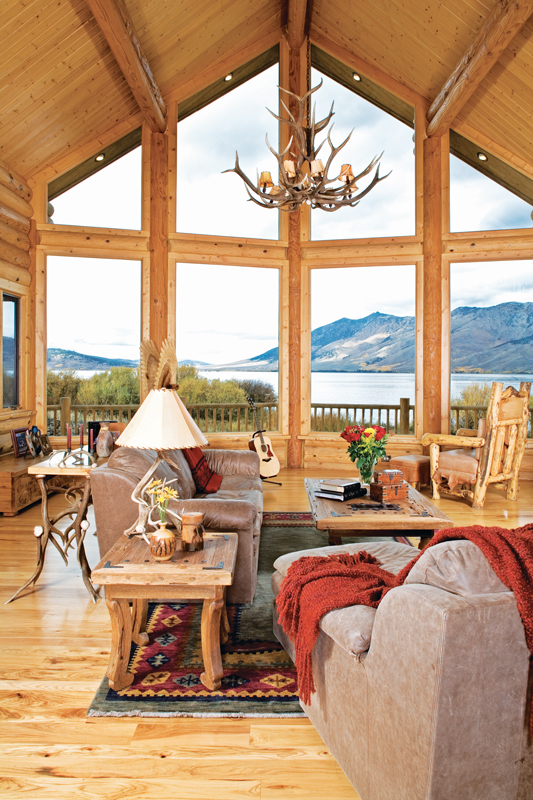 The Biggest Battles
The Biggest Battles
So what design elements cause the lion’s share of squabbles? It varies by home owner, but the top contenders are the kitchen, great room and master bath. Often, couples place different levels of importance on these areas or have wide-ranging visions for their layout, personalization and ambiance.
“The size of the house is one of the biggest areas of disagreement,” says Allen. “It usually tends to end up bigger than one partner would like. In addition, the outside look, amount of sunlight that comes into the house, volume of glass and how they should capture the view are talked about all the time.”
In some cases, one party leans toward having a large amount of glass because they love the light and the outdoor views, while the other is resistant to the idea because he/she is thinking about the cleaning this entails.
“My advice would be to go for the window look you want and just hire cleaners as needed,” says Jay. “Achieving harmony and design satisfaction is worth those extra few hundred dollars occasionally.”
He Said, She Said…
Let’s face it: Men and women often have very different ideas about what constitutes a dream home. While every case is unique, there are some common gender threads that surface with home design.
A popular toy company’s study shed light on this recently: “Lego discovered that when boys built a Lego house, they played on the outside with Lego cars, trucks and people,” shares Allen. “When girls built a Lego house, they played on the inside, imagining relationships between the Lego people.”
While this scenario may not fit every man or woman out there, it does offer insight into why some men and women have trouble agreeing on different aspects of their home’s design.
“In some cases, women are inclined toward a more refined and finished look and are more cognizant of things like rough surfaces causing later issues,” explains Allen. “They also may be better budget-trackers. On the other hand, men may be more drawn to a certain exterior look, materials, decks, stone, prominent fireplaces and big-view windows.”
Individual rooms and spatial relationships also seem to be more of a priority for one gender than another.
“The kitchen is often a priority for women,” says Karen. “They usually want the kitchen combined with the living and dining areas because they envision their children and grandchildren coming over, and they don’t want to feel like they are missing out on the family being together. Men, however, are often the ones who want the big garage and a theater room.”
While some men crave a designated “man cave” or similar space carved out for hobbies, others might be the resident chefs, and therefore want a bigger say in the kitchen space.
“The bottom line is that you need to figure out what’s the most important thing to you,” suggests Jay. “Whoever will use a particular room the most should be in charge of the design decisions for that room.”
First Steps
Once you decide to build your dream home, priority-one is to find a professional who will steer you in the right direction. Whether you are working with an architect, a log home staff designer or a company sales rep, you need to ensure he or she is a person who will be alert to your needs, present various options and offer recommendations.
“You need to find someone who will really listen to you,” advises Jay. “It’s important that he or she addresses your concerns and guides you. This person will serve as a referee at times, hearing both sides and pointing out the pros and cons, leading you toward a compromise that works for both of you.”
Before floor plans are drawn, you should have a number of constructive conversations with your chosen professional, working through what you want to achieve, how much you want to spend, what you are and aren’t willing to give up and why certain features matter to you. Don’t be afraid to meet as often as you need to finalize the design.
“Designing is as much about eliminating options as it is about generating new ideas,” shares Allen. “Before we start drawing, we have a lot of conversations with our clients. We joke that we start from a 40,000-square-foot view of the project and then continue to drill down to smaller and smaller components. A conversation at the project site also helps us all understand the limits of the footprint of the house, the orientation of the views and driveway, the style of surrounding homes and the topography of the land. With these in mind, couples often start dreaming much more in unison.”

Learn to Compromise
It may not always be easy, but compromise is a key ingredient to creating harmony in your home, and understanding the reasoning behind your significant other’s priorities is crucial.
“Instead of automatically saying ‘no way’ to your partner’s idea, ask why that particular thing is important,” recommends Karen. “Be willing to hear him or her out and compromise on items that you may not feel strongly about. Think about the things that matter most to you, and remember that this is a dream that both of you are bringing to life.”
Listing priorities out ahead of time may help, perhaps even dividing the list between must-haves and wishes. “One house simply can’t contain every dream you’ve ever had,” explains Allen. “A house is undoubtedly a series of compromises of style, size and budget.” Sometimes budget can promote compromise, since it may dictate which items on your wish list are feasible and which are not. “Usually budget drives size, giving us boundaries to work within,” says Allen. “It also helps to put everything on the table in the way of features, and their associated costs. This encourages ‘value judgments’ as to just how important a certain feature is.”
Once people see their ideas drawn on paper, they sometimes decide they really don’t need certain features anymore, and many disagreements tend to work themselves out.
Practice Patience
It may be a bit cliché, but the old saying that “Rome wasn’t built in a day” is a good adage to keep in mind when designing your dream home. Don’t rush important decisions; take the time to have multiple meetings and really think it through. Listen to the advice of the professionals, and don’t be afraid to speak up and make revisions. If you find yourself at an impasse, take time off and come back to it later with a clear head.
“If you and your partner disagree on major features such as budget, size or style of the home, all we can do is suggest that you put a pause on the project for a little while and come back when you have worked it out between yourselves,” says Allen. “Trying to force agreement can cause a larger disagreement and bad feelings later on in the project.”
A Happy Ending
In the end, taking the time to work out a plan that everyone agrees on will make all the difference. “Make sure that you are both getting something that makes you happy every day you wake up there,” advises Karen. “The process can test your patience, but you won’t remember that process to be quite as hard when you enter that door for the first time and walk into the dream that you can now call home.”




